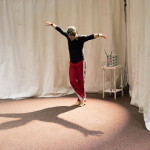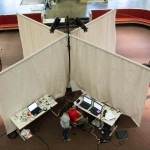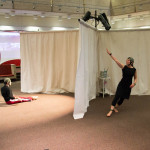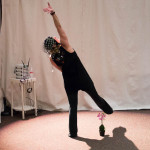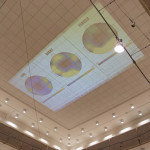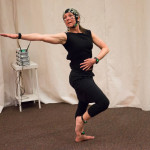Art and science collide in the “Your Brain on Art” dance performance, showcasing three dancers’ brain activity in a variety of disciplines, displayed in the Cullen College of Engineering 1’s atrium.
The performance is part of a pioneering research of the University’s Noninvasive Brian-Machine Interface Systems, led by neuroscientist and engineer Jose Luis Contreras-Vidal. It is funded by the National Science Foundation and aims to better understand what happens in the brain as people both make and view art.
“The process (of) creating art, whether (it’s) a performance, a painting or music, leads to innovation,” Contreras-Vidal told The Cougar about his project.
Friday’s performance featured assistant professor of dance John Beasant III, associate professor of dance Teresa Chapman, and associate professor of dance Becky Valls.
All dancers were wearing sensor-embedded skullcaps to record brain activity. All three individually performed a variation of Exquisite Corpse, a game involving chance collaborations made famous by Surrealists in the 1920s.
The series is part of a collaboration between Contreras-Vidal, Blaffer Art Museum and members of the UH and Houston art communities.
The work will continue with a group of musicians on March 1.
news@thedailycougar.com
—
“Dancing ‘Exquisite Corpse’ illustrates brain waves” was originally posted on The Daily Cougar

